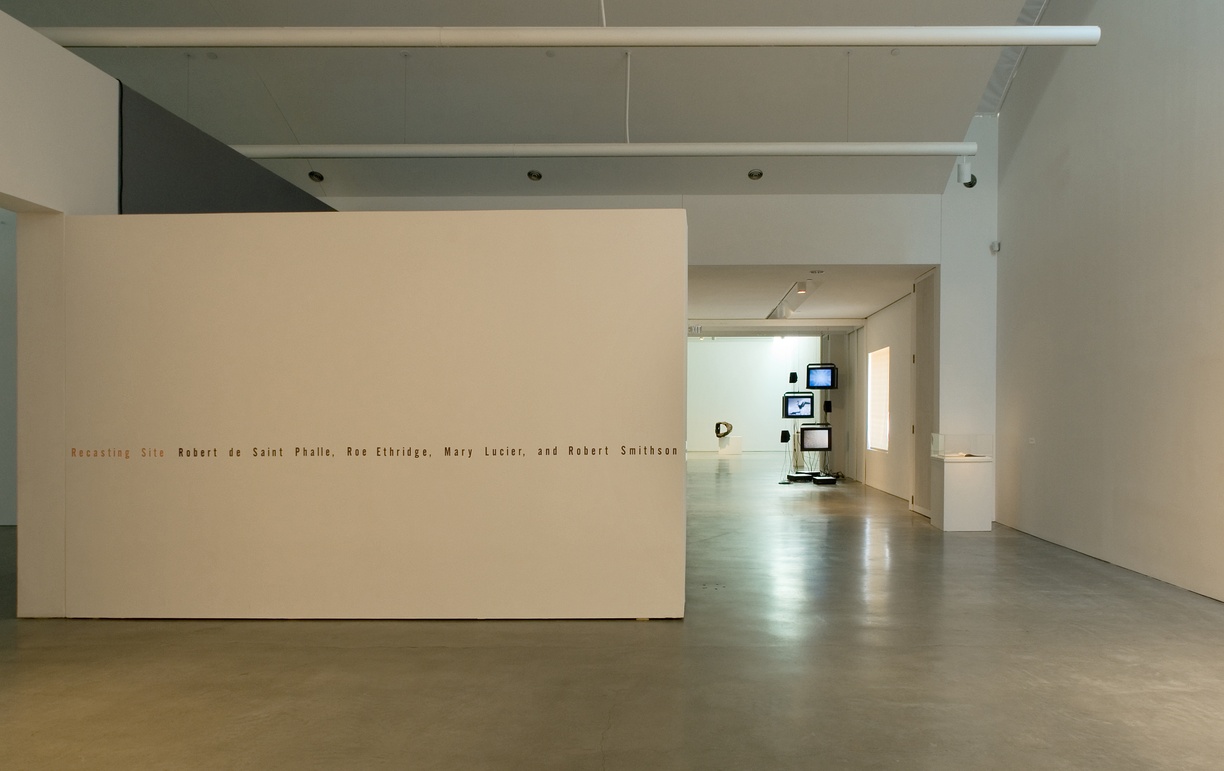
Recasting Site: Robert de Saint Phalle, Roe Ethridge, Mary Lucier, and Robert Smithson encourages a sense of discovery. Media such as photography, speech, video, and sculpture are used to transform, mimic, and coax. Works by Robert Smithson (1938–73) and Mary Lucier (b. 1944) transfer concerns of Minimalist sculptors and composers, respectively, to the realms of landscape and architecture.
Smithson is represented by his 1972 slide show and lecture titled Hotel Palenque. In it he narrates a virtual tour of a hotel in the Yucatan that is simultaneously under construction and being torn down, questioning assumptions about the site’s banality and the neighboring Mayan ruins’ preciousness.
Mary Lucier contributes four works dating from 1969-1996. The earliest piece, I Am Sitting in a Room (1969) is a slide-and-sound installation created with composer Alvin Lucier, where duplication of analogue, audio recordings, and Polaroid photographs compromise media integrity. As sound and image falter, new compositions arise, changing the photograph of and sounds from a domestic interior into a galaxy of musical feedback and glowing images of black-and-white abstraction.
Roe Ethridge (b. 1969) shows eight photographs derived from previously dismissed Polaroids (2005–07) he took of everyday surroundings such as a black bag at his studio. Ethridge scans the Polaroid, uses the computer to accentuate the fingerprints and cracks from its mishandling, and then makes a 24-x-30-inch C-print. The surface flaws of the Polaroid become the print’s foreground, adding compositional elements and referencing the absent original.
In one of Robert de Saint Phalle’s (b.1978) three sculptures, Quarry, he begins with a found rusty barrel, and then inserts a colorful, amorphous form made of automobile foam and auto paint. Its underside is modeled after the barrel’s interior and its flat dorsal side is marred with a baseball-sized blister. Through mimicking and scarring, de Saint Phalle recasts the found object’s meaning, from industrial detritus to one imperfect skin housing another.
Recasting Site was organized by Terri C. Smith as part of the requirements for the master of arts degree in curatorial studies.
CCS Bard student-curated exhibitions are made possible with support from the Rebecca and Martin Eisenberg Student Exhibition Fund, Mitzi and Warren Eisenberg, and the Patrons, Supporters, and Friends of the Center for Curatorial Studies. Special thanks to the Robert Mapplethorpe Foundation.







